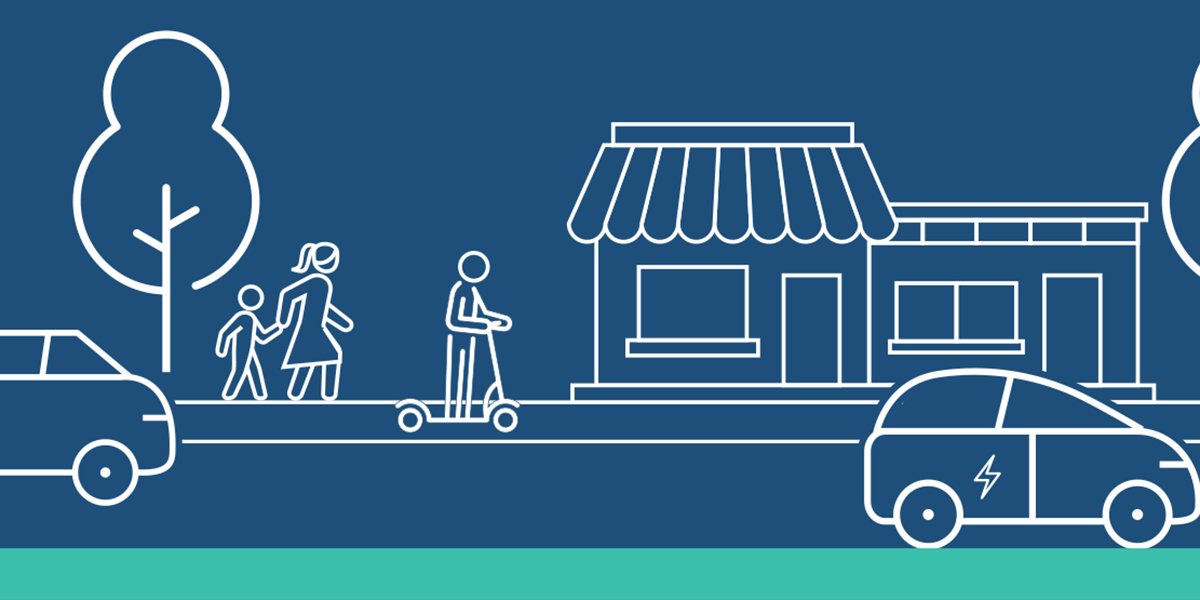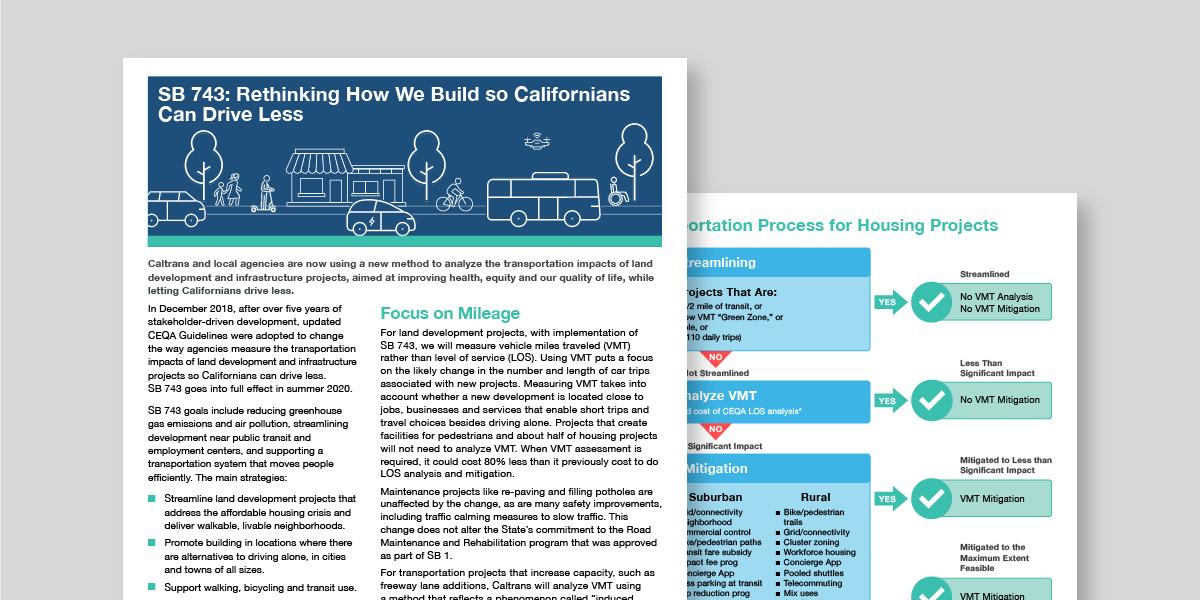
California SB 743 Hits the Streets—Changes Everything
California is a global leader in the fight against the devastating effects of climate change. And there’s good news: it met its 2020 climate goals, mainly because of a dramatic switch to renewable energy. The next big challenge is to reduce greenhouse gas emissions from transportation—which causes 50% of the state’s GHG emissions—to meet tough 2030 goals. Challenge accepted.
Here’s what’s going to be different now.
When considering the environmental impacts of a new development project, public agencies, including the California Department of Transportation (Caltrans), had been measuring whether that new development would cause traffic delays during rush hour. Projects in areas that were already congested—even if they provided much needed new housing or retail space—often required the developer to fund expensive mitigation, like widening roads or intersections. Gotta keep the traffic moving! Developers would often reduce the number of housing units in a project, or eliminate them entirely, to reduce anticipated congestion. Or, they would build in outlying areas where there was less concern about congestion. And that unintentionally reinforced auto dependency and created longer commutes, which also led to a loss of open space and agricultural lands.
Now, California Senate Bill 743 directs public agencies to instead measure vehicle miles traveled, or VMT. That’s the new vehicle trips generated by a proposed development project’s residents, visitors, shoppers and employees. VMT takes into account whether the project is located close to jobs, businesses and services that enable short trips and travel choices besides driving alone. That’s a pretty huge change.
SB 743 aims to move more people with fewer cars, so we’re not stuck in traffic. The main elements are:
- Streamline development projects that address the affordable housing crisis and deliver walkable, livable neighborhoods. About half of all future housing across the state would not be required to analyze VMT transportation impacts at all; the process is streamlined for them.
- Promote developments in locations where there are alternatives to driving alone, in cities and towns of all sizes.
- Change the way new transportation investments are analyzed, focusing on their impact on total driving.
- And support walking, bicycling and transit use.
The benefits?
- Combat climate change by helping to meet ambitious 2030 GHG emission goals
- Heal communities and repair past injustices. Many previous transportation decisions quite literally put up barriers, divided communities and amplified racial inequalities, particularly in our Black and Brown neighborhoods.
- Improve quality of life—spending less time behind the wheel
- and more time doing the things we love.
- Save lives through reducing pollution, enhancing opportunities for walking and biking, and incentives for local Roadway Safety and Vision Zero plans.
Controversial and sometimes confusing, with passions running high, SB 743 is going into full effect this summer—amid a pandemic that has led people to be frightened of using public transit, unable to shop and recreate as before, and unsure about living in urban areas. And in the midst of society-changing protests that have highlighted systemic inequalities. Combined with a deep partisan divide that has ignited heated passions.
Launching such a major paradigm change required quickly changing messaging priorities as community interests changed. MIG helped Caltrans and the Governor’s Office of Planning and Research with hours of online focus groups, webinars and presentations with diverse audiences—geographically, culturally and politically—who have a wide range of knowledge and understanding. Extremely carefully worded fact sheets emphasize the benefits for a general audience, and technical details for developers and planners. A tightly honed video, done entirely in PowerPoint, offers layers of information and benefits-based infographics.
“With SB 743 in place, California is at the forefront of innovative and creative strategies for transportation, increasing housing, protecting our environment, and improving our quality of life,” the video concludes.


